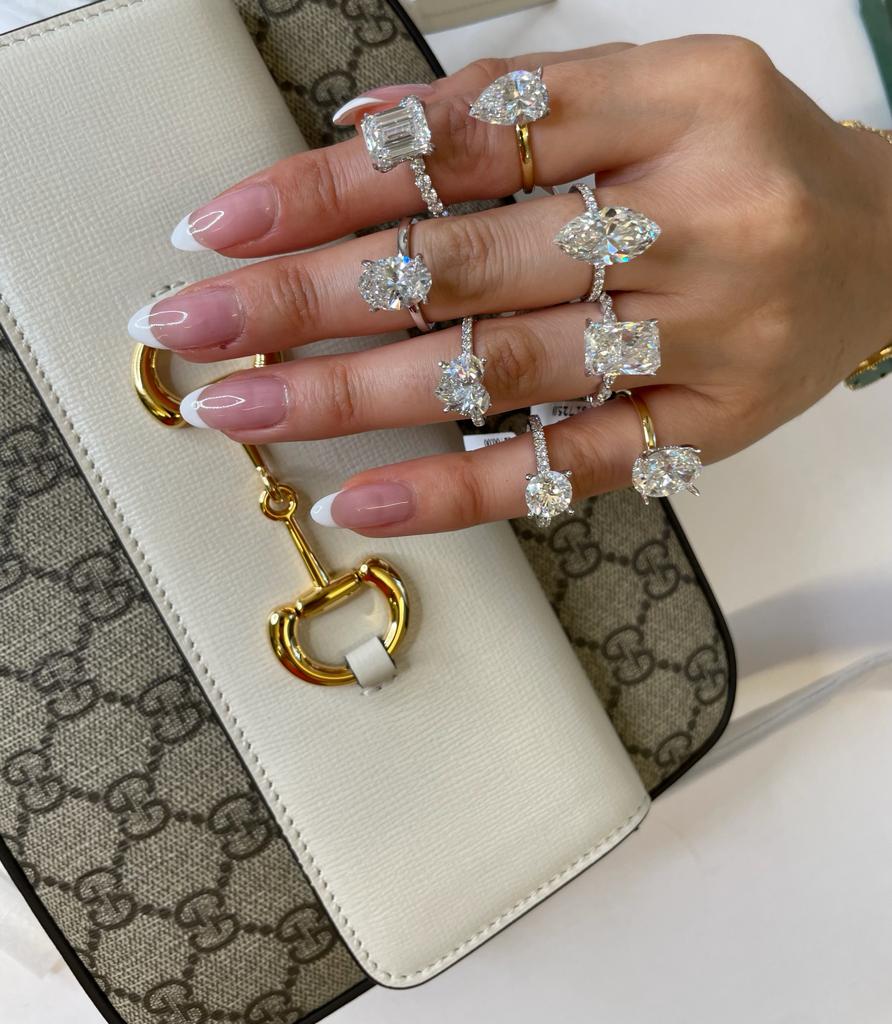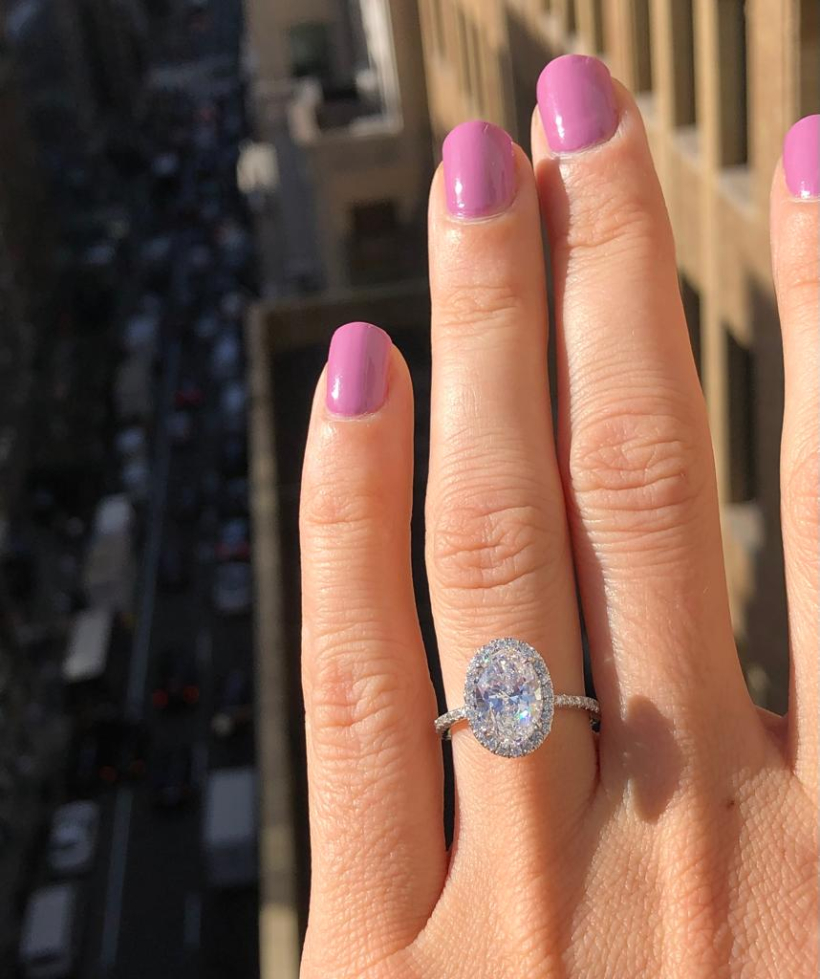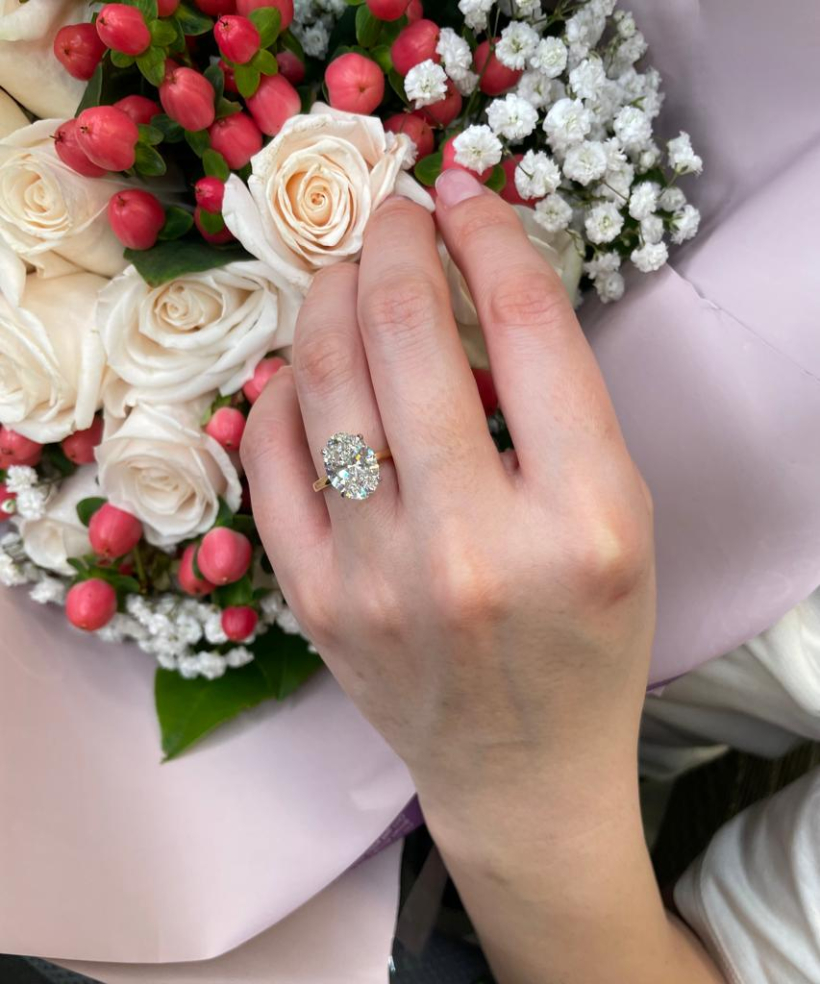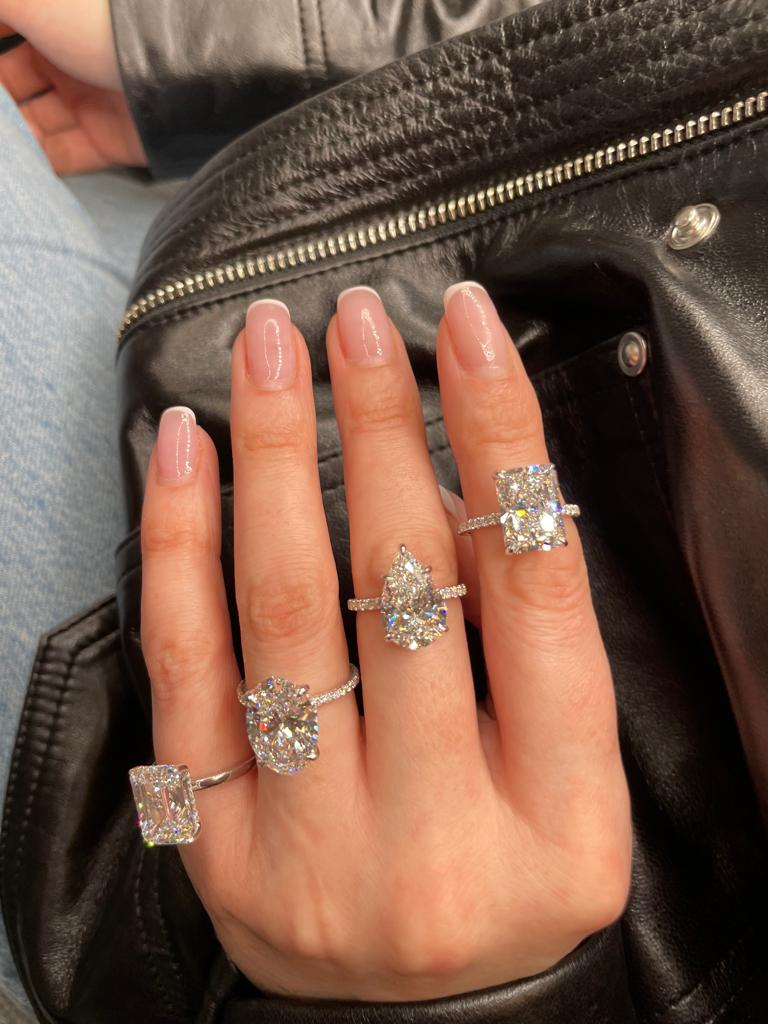Lab grown diamonds are becoming increasingly popular, particularly among engagement ring shoppers. There are a lot of different reasons that one might consider acquiring a lab grown diamond ring, such as the reduced environmental impact or the (potentially) lower price. Even if you’re adamantly opposed to the idea of lab grown diamonds, it’s hard to argue with the upside of buying one for yourself or that special someone in your life.
But if you’re new to the world of lab grown diamonds or this is your first time ever reading the term, you probably have a lot of questions. For instance, how are lab grown diamonds actually made? Are lab grown diamonds real diamonds? Do lab diamonds pass a diamond tester? What are the benefits of lab grown diamonds? Are they a better choice than natural diamonds? Finally, where can you find affordable, pre-owned lab grown diamonds for sale?
In today’s guide, we will answer all of these questions and more, but first let’s look at the term itself: lab grown diamond. What does it really mean? Read on to find out!
What Is A Lab Grown Diamond?
Lab grown diamonds, also known as lab created diamonds or simply lab diamonds, are diamonds made through artificial processes that replicate the conditions in which natural diamonds are formed. Natural diamonds are mined from deep within the Earth, where they have formed over millions of years. Essentially, this means that diamonds are just carbon that has been exposed to extreme pressure and high temperatures or carbon gases that have formed into diamonds in interstellar gas clouds. So, lab diamonds simply take these components and processes and recreate them in a laboratory environment.
How Are Lab Grown Diamonds Made?
There are actually two different ways that lab grown diamonds can be made. The first method, known as High Pressure High Temperature (HPHT) is exactly what it sounds like: a small “seed” diamond is placed into pure carbon and exposed to high pressure and high temperatures, just like a natural diamond forming in the Earth would be. This usually means that a gemologist or trained professional will place a piece of carbon in a containment cube that is surrounded by extremely powerful heaters. This cube is then put under high degrees of pressure (often in an advanced press) to create diamonds over the span of a few days or weeks.
The second method is called Chemical Vapor Deposition (CVD). During this process, a small seed diamond is put into a sealed chamber that is filled with carbon-rich gas. Labs often use methane combined with oxygen or hydrogen. Either way, energy is applied to allow the carbon gas to form diamond layers on top of the seed diamond, essentially allowing the seed diamond to grow larger and larger, one layer at a time. This mimics the way that diamonds are formed in space. Like HPHT diamonds, CVD diamonds can take anywhere from a few days to a few weeks to create.
Are Lab Grown Diamonds Real?
Yes, lab grown diamonds are real. They have the same physical, compositional, and aesthetic properties as naturally formed diamonds because they have been created using the same processes, albeit over a much shorter period of time and in a controlled environment. Lab grown diamonds can be GIA-certified because they are real, although the Gemological Insitute of America (and other gemological organizations) like to differentiate between lab grown diamonds and naturally-formed diamonds so that consumers know what they’re buying. For this reason, the GIA often works directly with lab diamond manufacturers so that each and every diamond can be identified at the time of its creation.
Do Lab Grown Diamonds Pass A Diamond Tester?
Diamond testers are devices that can tell between a real and a synthetic diamond by testing its thermal conductivity properties. Since lab diamonds and natural diamonds are compositionally identical, lab diamonds will almost always pass a diamond tester. In short, a diamond tester cannot differentiate between a lab diamond and a natural diamond.
It’s important to note that experienced jewelers and gemologists will typically be able to tell if a diamond is lab created or natural by examining its growth patterns or using advanced methods to test its electromagnetic properties. However, some diamonds may be harder than others to differentiate, so depending on your local jeweler to tell the difference may not always work. Instead, you’ll need to have a certified gemologist conduct thorough tests on the diamond to know for sure.
Benefits Of Lab Grown Diamonds
There are many reasons that people choose lab grown diamonds over natural diamonds. Here are just a few of the most important benefits to consider:
- Environmental Impact - Mining for diamonds can have a severe impact on the environment, leading many environmental groups to champion lab diamonds as a more ethical and environmentally friendly alternative. If you want your diamond to have a smaller carbon footprint, then lab diamonds are definitely the better option.
- Conflict Free - Diamond mining is often associated with highly dangerous conditions and conflicting environments that lead to “blood diamonds,” or diamonds that have been procured or brought to market at the cost of human lives. This is not a concern with lab diamonds.
- Transparency - If you want to resell your diamond jewelry or simply keep track of its origins, lab grown diamonds often have a better paper trail. Lab diamond manufacturers are required to have their creations certified, which means that you can always know exactly where your diamond came from. This may or may not be the case with natural diamonds.
- Affordability - Lab diamonds are almost always less expensive than natural diamonds because they are less rare. This may be a drawback for some, but if you’re shopping for an engagement ring on a budget, you can often get more bang for your buck with a lab diamond ring.
- Quality - Since lab diamonds are created in a highly controlled environment, the lab has more control over the quality and purity of the stone. This means you may be able to acquire a diamond with fewer inclusions and better physical characteristics.
- Availability - Lab diamonds can be created in a matter of days or weeks. This is nothing compared to the millions of years required to create natural diamonds. As a result, lab diamonds are often more readily available when and where you want them.
How To Buy Or Sell Used Lab Grown Diamond Engagement Rings
Are you interested in buying a pre-owned lab diamond engagement ring? Or perhaps you own a lab diamond ring that you’d like to sell for the best possible price? Either way, HYSTR is the perfect solution for you.
At HYSTR, interested buyers can look at pre-owned diamond rings from all across the country and bid on the one(s) they like. Once they come to an agreement on the price and the ring has been authenticated by one of our gemologists, they can expect to receive their ring in the mail in as little as a week! And if you’re looking to sell your lab grown engagement ring, the process is just as easy. Once you upload photos of the ring and find interested buyers, you just have to agree on the price, send the ring to us for authentication, and wait for your check in the mail!
We hope you enjoyed our guide on lab grown diamonds! Are you currently trying to buy or sell a used engagement ring? If so, be sure to contact HYSTR today!








